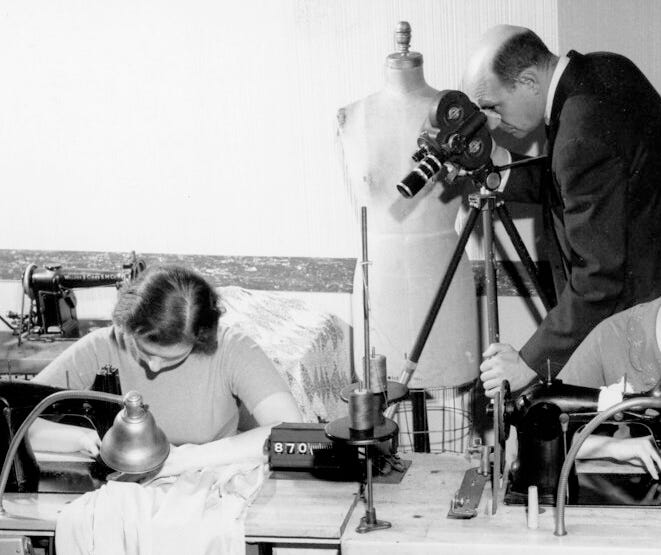The end of Victorian culture, part I: structural forces
post by David Hugh-Jones (david-hugh-jones) · 2021-12-09T19:25:23.222Z · LW · GW · 0 commentsThis is a link post for https://wyclif.substack.com/p/the-end-of-victorian-culture-part?r=2k7zr&utm_campaign=post&utm_medium=web
Contents
Technology substitutes for cultural tightness Science and religion break up Structure versus chance None No comments
If a Victorian were transported to 2021, he would be amazed by the progress of technology. He’d be fascinated by the triumphs and challenges of democratic politics. But he would probably also say that our culture had been taken over by the Devil.
For good reasons and bad, right?
- Gay rights? Taken over by the Devil.
- Career women? Taken over by the Devil.
- How children talk to their parents? Obviously inspired by the Devil.
- “The Vagina Monologues”? Devil’s work, right there.
- Churches? Yeah, the Devil likes them empty.
- 50% of children born out of wedlock? Wow, worse than medieval times, and clearly the result of the Devil.
- Jeffrey Epstein’s little black book? What would you expect—from the Devil?
- Rock music? Oh come on:
In Michele Gelfand’s more scientific terminology, Victorian culture was tight: it put many constraints on behaviour. Contemporary Western culture is very, very loose. I’ve written here, here and here about how the Victorian cultural system worked. Here I’ll ask how things changed.
There’s obviously a whole story about the 1960s and after. But for now I want to focus on earlier roots of the change, because already in the (say) 1920s, parts of the cultural world looked very different from the high Victorian era. In fact, some of the stuff that happens after the ’sixties is a mass-culture reprise of the earlier period. The Sex Pistols’ sweary interview with Bill Grundy on TV (NSFW, obviously right?) is just Eliza Doolittle saying “Not bloody likely” on stage in Pygmalion. But my favourite example is the picture below:

Here are two deep structural changes that, at the start of the twentieth century, are causing problems for the Victorian-era consensus in all Western societies.
Technology substitutes for cultural tightness
Friedrich Nietzsche described the purpose of morality as “to breed an animal that can make promises”. Throughout the early growth of capitalism, this animal was in great demand.
Firms are in principal-agent relations with their employees. They can’t monitor them all the time. They have to trust them. Early modern employers cared a huge amount about trustworthy apprentices, servants, and agents. This was true even in the individual household. The need for trust only grew when firms expanded beyond a single household, to span countries and continents.
It is a reasonable conjecture that the British industrial revolution depended in part on a successful trustworthy-human breeding program. (Joel Mokyr has made this argument.) Certainly, the products of Sunday schools were in demand with employers.
A few years after Nietzsche made his remark, he fell weeping upon the neck of a horse in Turin, in the grip of a permanent mental breakdown. By that point in history, the horse and the promise-making animal were in a similar situation: they had taken over the world, but new technology would shortly make them obsolescent.
If you can’t measure potential output, you have to rely on hiring the right kind of person, a hard worker. When you can measure potential output, life gets much simpler: you can sack people if they fall behind. In 1911, Frederick Taylor wrote Principles of Scientific Management, which put forward the time and motion study:
In the past the man has been first; in the future the system must be first.

The time and motion study calculated the optimal amount of time required for a given task. Measurement replaced character.
New technologies had increased the speed of communication: in the 19th century the post, the railway and then the telegraph; later, the telephone. Firms could coordinate and check on employees’ behaviour much faster before, leaving less room for individual initiative and individual corruption. Organizational forms responded: the managerial hierarchies of modern business appeared first on the US railroad, to manage fast-moving steam trains over wide areas of track. Other technologies, such as the typewriter, filing system, punch card and calculator, improved record-keeping, allowing employers to trust less and verify more.
State bureaucracies changed too. Prussia, the first Western bureaucracy, started by relying on the high-minded sense of duty of its officials. Over time this could be replaced by the classic Weberian bureaucracy: a chain of command, with powers exercised according to written rules. The state did not just transform itself, it also intervened in society, making it easier to monitor. Uniform languages, measurements, city grid systems and even individuals’ surnames were created in the interests of administration and taxation. Simultaneously, it laid the foundations of the welfare state, which substituted for informal relationships, and for non-state providers such as churches. For example, the introduction of old-age pensions made the traditional duty of children to care for elderly parents superfluous.
Science and religion break up
This is so well-known, indeed clichéd, that it’s more interesting to remember that religion started off as an enabler of science. Nevertheless, by the 19th century there is a clear conflict between literalist interpretation of the Bible, and modern scientific method. Throughout the 19th century thoughtful people tried to parse this difference. But religion was increasingly threatened, with Darwin an obvious inflection point, and David Strauss’ Life of Jesus another. This challenged the ideological basis of many Victorian-era cultural systems. Next, the human sciences, in particular Marx and Freud, turned a critical spotlight on religion itself.
Could there be a substitute? A rational religion, as the French revolutionaries had dreamed? Nationalism? Secular ethics? Matthew Arnold’s “sweetness and light”? Maybe. But in practice, no. In the early 20th century, none of these became adequate substitutes for religion as a cultural glue.
Structure versus chance
These are deep structural forces which challenged Victorian moral culture. But history is not just the working-out of structural forces. Modern social science gives us many reasons to reject this kind of determinism. Culture, in particular, is in some respects a kind of vast coordination game, and in coordination games, leadership can be crucial. So, cultural change can be driven by elites in the right place at the right time. This leaves a role for historical chance, in the form of brilliant individuals. Random events can also intervene, trashing some ideas and elevating others. I don’t know how to allocate responsibility between deep structure and historical dice rolls, but part two will discuss some candidate brilliant people and — you can probably guess which — catastrophic events.

0 comments
Comments sorted by top scores.